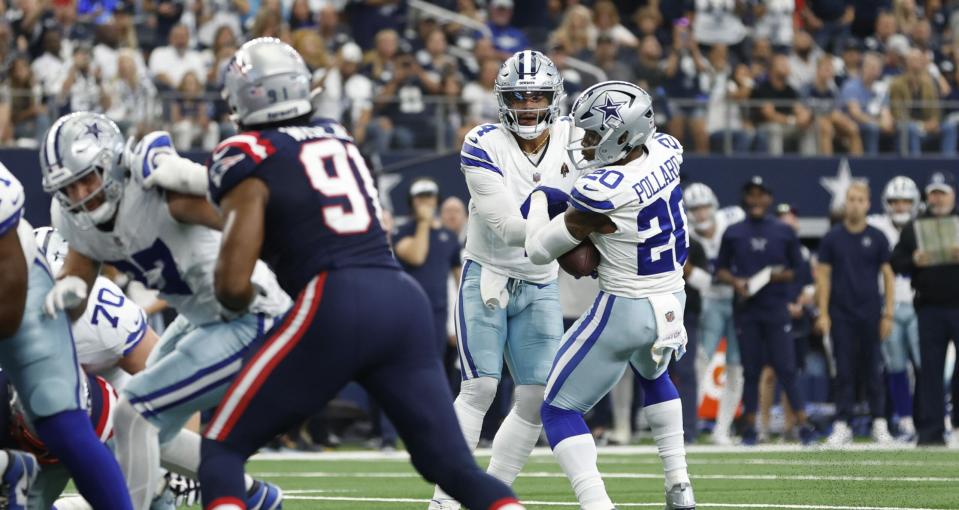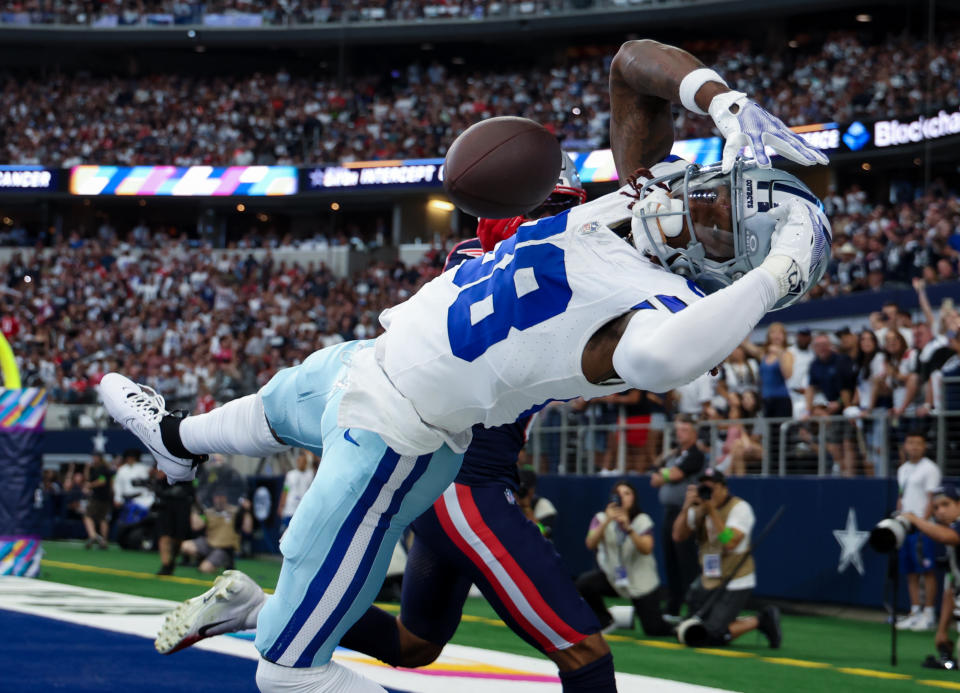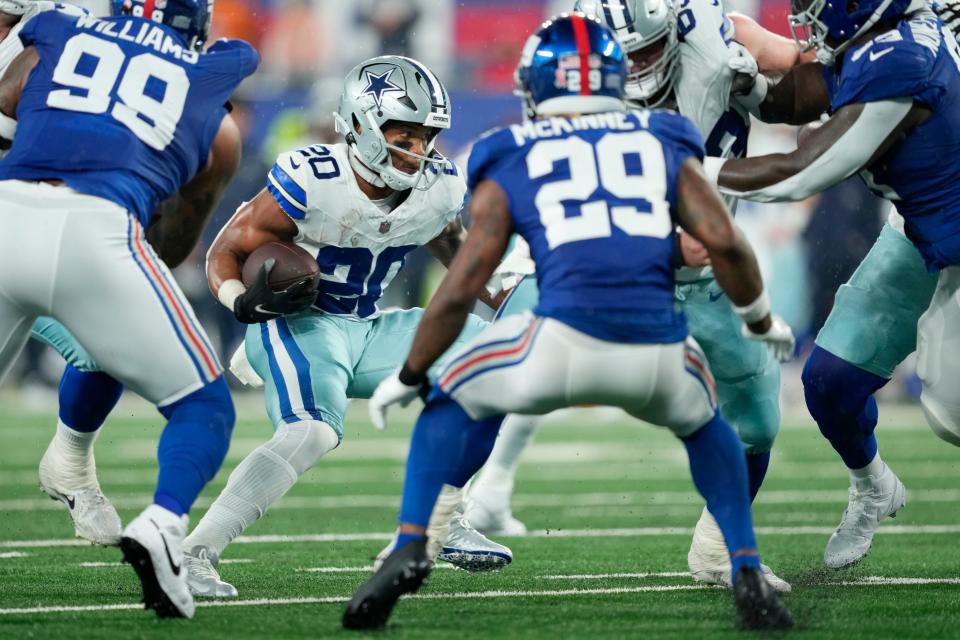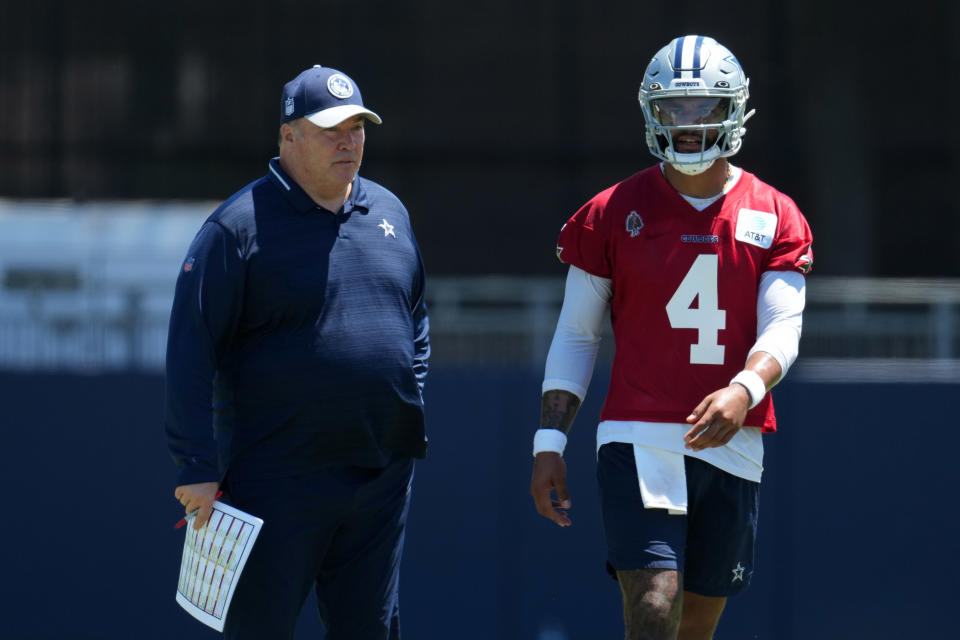Why are Dak Prescott and the Dallas Cowboys failing in the red zone?

Through the first four weeks of the 2023 season, the Dallas Cowboys have more opportunities in the red zone than just about any other offense. They have 19 drives inside the opposing 20-yard line, and they’ve converted just seven of those drives into touchdowns. The Buffalo Bills also have 19 red zone drives this season, and they’ve converted 13 of them into touchdowns. Dallas’ 36.8% red zone conversion rate is the NFL’s third-worst, behind only the New Orleans Saints and the Houston Texans.
Per FTN (formerly Football Outsiders), Mike McCarthy’s offense ranks first in plays per drive (7.74) and third in scores per drive (0.55), but Dallas ranks first in field goals per red zone trip (0.34), and 30th in touchdowns per red zone trip (0.37). Overall, the Cowboys are 24th in points per red zone trip (4.21), which makes sense when you’re exchanging all those potential touchdowns for other things.
Per Sports Info Solutions, Dak Prescott has the NFL’s most dropbacks (34), attempts (32), and completions (16) in the red zone, and he’s thrown three touchdowns in that area to one interception. But his red zone EPA of -12.77 is the NFL’s third worst, behind Bryce Young of the Carolina Panthers and Kirk Cousins of the Minnesota Vikings.
Running back Tony Pollard has more red zone attempts (27) than any other back in the league this season, but his red zone EPA of -2.56 is the NFL’s fourth-worst among players at his position, and he has just two red zone rushing touchdowns. Each of the four backs behind Pollard in red zone carries (Christian McCaffrey of the San Francisco 49ers, David Montgomery of the Detroit Lions, Kenneth Walker III of the Seattle Seahawks, and Kyren Williams of the Los Angeles Rams) have five rushing touchdowns for their fewer chances.
Receivers CeeDee Lamb and Michael Gallup are first and second in the NFL with 29 and 27 red zone routes run, respectively, but they have just one red zone reception between them for three yards and no touchdowns.
Dallas’ three red zone touchdown receptions have come from tight ends Jake Ferguson and Luke Schoonmaker, and running back Rico Dowdle.
This is a global problem for America’s team, and while everyone from Jerry Jones to Mike McCarthy to Dak Prescott has commented on the issue, there doesn’t seem to be any obvious fix in the works. Not what you want when you have to face the 49ers’ defense this Sunday night.
In this week’s episode of “The Xs and Os with Greg Cosell and Doug Farrar,” Greg (of NFL Films and ESPN’s NFL Matchup) and Doug (of Touchdown Wire) got into these issues based on their tape study and metric analysis.
You can watch this week’s “Xs and Os” right here:
You can also listen and subscribe to the “Xs and Os” podcast on Spotify…
…and on Apple Podcasts.
Now, let’s dive into why the Cowboys are failing in the red zone… and how they can fix it.
Throwing short of the sticks.

The Cowboys don’t have any serious yards-after-catch receivers, but they’re asking those targets to make too much of those opportunities regardless. Outside of the end zone fade balls (which we’ll get into in a minute, to Dallas’ dismay), McCarthy and his staff aren’t designing enough route concepts that challenge enemy defenses in the money part of the field. That’s leaving too much meat on the bone.
This 14-yard completion to Jake Ferguson against the Patriots came from the New England 18-yard line, and except for CeeDee Lamb getting downfield, this was more mush through the middle of the field than anything built to challenge the defense. The Patriots’ overload to Prescott’s front side forced the hot throw to a point, but you’d also like to see more easy openings downfield.
The fades need to fade.

“A lot of teams like to throw fades both in the high and low red zone,” Greg said. “You have to decide if you’re a big believer in that, and you have to decide who your receivers are, and if they’re fade ball receivers. I’m not a big believer in fades, but that’s a personal thing. I don’t think it’s a high-percentage throw, unless you have one of those receivers. As much as I like CeeDee Lamb, I’m not sure if he’s one of those guys.”
The fade conundrum Greg talked about this week happened in last Sunday’s game against the New England Patriots, when Prescott tried to hit Lamb for a touchdown with 12:16 left in the first quarter. The fade wasn’t on time and on target, cornerback Christian Gonzalez defended it, and it was back to the drawing board.
And whatever this fade attempt to Lamb was against the Cardinals… I’m not sure what the idea was here.
Prescott has four red zone fade attempts this season, and he’s completed none of them. Guys like Mac Jones and Desmond Ridder have fade touchdowns this season, and Prescott doesn’t even have a completion. No bueno, as they say.
The first-and-goal runs are not working.

The Cowboys’ issues with the red zone run game were perfectly personified on the next play after the three-yard completion to Ferguson. At the New England one-yard line, Prescott and Tony Pollard bumped into each other at the handoff, and it was a four-yard loss. Woof.
Here’s a first-down run that went nowhere — fullback Hunter Luepke with a one-yard run from the New England four-yard line. With trips right, there was no additional schematic stuff to get the rookie home, and once again, everything just collapsed.
How can they fix it?

“I think you have to talk about the multiple ways you play in the red zone,” Greg said. “There’s different concepts from the 11-yard line to the 20-yard line, and different concepts from the one-yard line to the 10-yard line. 11-20 we call the high red zone, and 1-10 we call the low red zone. Obviously, when you’re in the 11-20 yard lines, there’s more space. You can do more with route concepts, and that’s where spacing becomes important. They’ve not been good at that, and the timing of their route combinations has been off a little bit. I don’t think people realize how much that affects the quarterback.
“People just say, ‘Oh, Dak’s no good,’ but that really impacts the quarterback, and it makes it much harder. This is not necessarily a Dak Prescott issue, even though everything falls on him. Receivers have been too close together.
“Then, when you get in the lower red zone, the space decreases significantly, so you need to find ways with your route concepts to displace defenders. Whether it’s with rubs or picks, or the nature of the routes you run. You need to displace defenders, because there’s not a lot of space, and the quarterback doesn’t have a lot of time. You can’t go through a whole reading progression.
“And then, there’s… I don’t want to say gimmick plays or trick plays, but you have to be creative at times in the low red zone. It’s hard to score there, unless you’re physically better and you can move people in the run game. If you can’t, you have to get creative. We’re seeing more teams doing that, and that’s an area where maybe they have to get more creative if your base stuff is not working for whatever reason.
“I never like to hear a coach say, ‘Oh, we just have to execute better.’ Of course — execution is built into everything you do. But if it’s not working, let’s try to scheme it up a little better.”
Motion to displace the pass or run strength might help — Andy Reid is a master at that, to use one example — and the Cowboys don’t do it a lot. There are no real advanced motion concepts in Dallas’ run or pass games, so that would be a nice addition. Adding some QB run concepts with or without RPO looks would also be good. Anything to take this red zone offense out of the realms of the predictable and easy to stop and counter? That’s McCarthy’s job to add to the call sheet, and the Cowboys had better get into that with a quickness.

